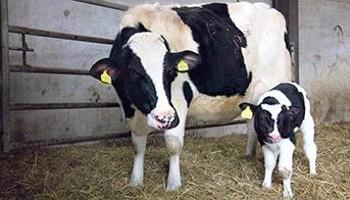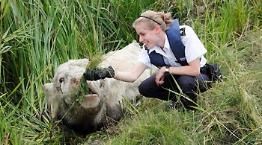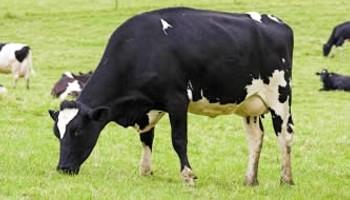Dairy Cow Farming - Housing and Lifecycle | RSPCA - RSPCA
Dairy cow farming
The ways in which dairy cows are farmed in the UK varies, but some methods are more widely used than others. Let's look at how dairy cows are most commonly kept.

Dairy cow life-cycle
Cows are pregnant for nine months. Dairy farmers usually plan for their cows to give birth to their first calf when they're around two, so heifers (young female cows) will usually be pregnant for the first time when they're around 15 months old. After this, farmers generally aim for their cows to calve again every year.
Dairy cows produce milk for about 10 months after calving. The average UK dairy cow produces almost 8,000 litres of milk each year and has just under four milk producing cycles in her lifetime, which is typically six and a half years.
Dairy cow housing
In the UK, dairy cows are traditionally kept in fields in spring and summer when the grass is growing, and housed indoors during the winter. There are two main types of dairy cow housing systems in the UK: cubicles and deep litter yards.
Cubicles are individual bedded compartments where the cows can lie down. They usually have a concrete base, often covered with a cushioned rubber mat or mattress, which can be topped with bedding material such as sawdust, wood shavings or straw.
Some cubicles are 'deep bedded', which means the concrete base is hollowed out and filled with a deep layer of bedding, most commonly sand. A house with cubicles will also contain areas where the cows can go to feed and drink and, sometimes, additional 'loafing areas' where they can go to congregate and socialise.
Deep litter yard housing is very similar to cubicle housing, except the cows are given deep bedded yards to lie down in, instead of individual cubicles.


